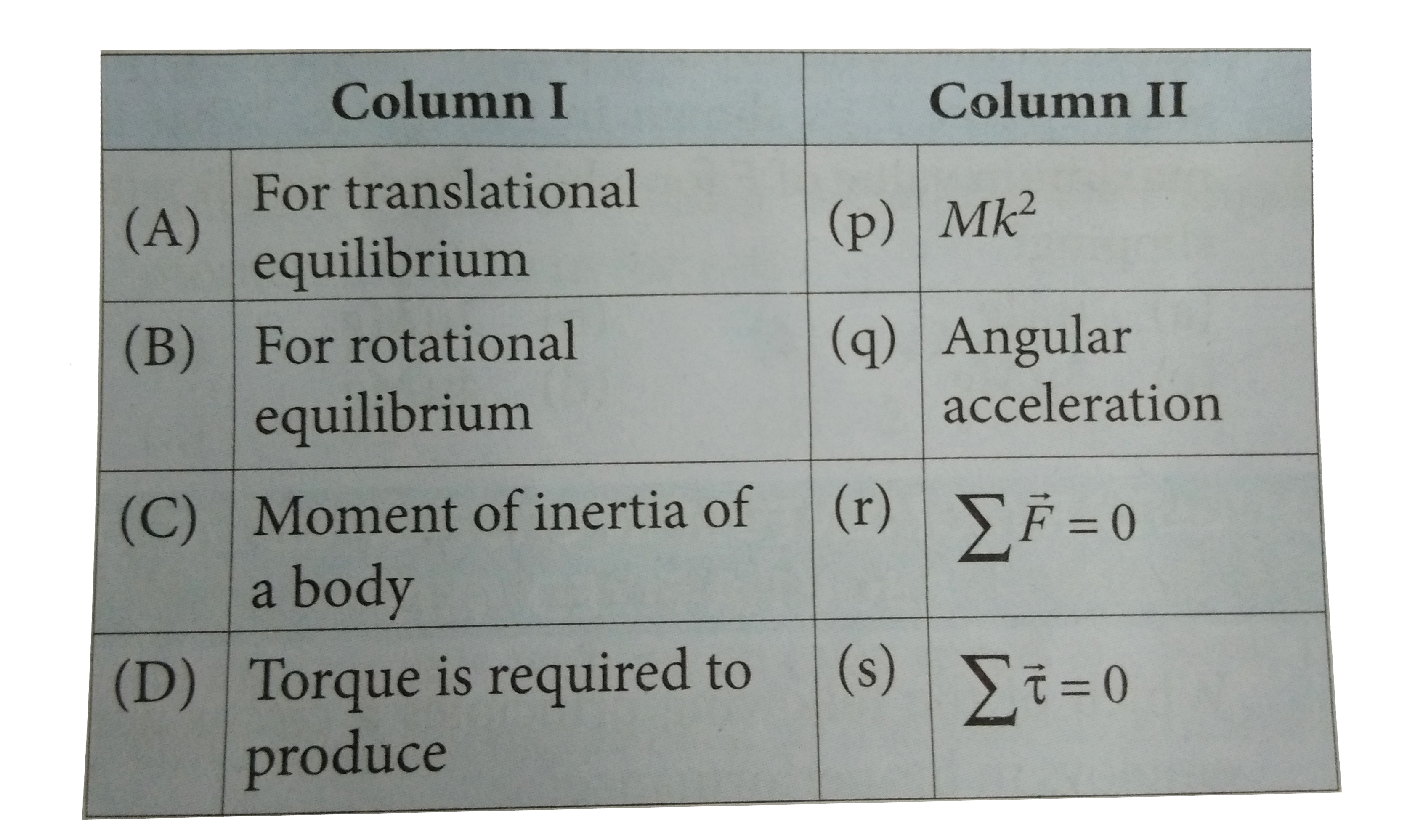Match the columns.
Column -IColumn -I(a)Leptotene(i)Chiasmata(b)Zygotene(ii)Chromosomes visible(c)Pachytene(iii)The pairing of homologous chromosome (d)Diplotene(iv)Clear appearance of tetrads
(a) - (i),(b)-(ii),(c) -(iv),(d) -(iii)
(a) - (ii),(b)-(iii),(c) -(iv),(d) -(i)
(a) - (ii),(b)-(iii),(c) -(i),(d) -(iv)
(a) - (iv),(b)-(iii),(c) -(ii),(d) -(i)
The correct Answer is:B
To solve the matching question, we need to understand the stages of prophase I of meiosis and the corresponding visible changes associated with each stage. Here’s a step-by-step breakdown of the solution.
1. Identify the stages of prophase I:
- The stages given in Column I are:
- (a) Leptotene
- (b) Zygotene
- (c) Pachytene
- (d) Diplotene
2. Identify the visible changes in Column II:
- The visible changes given in Column II are:
- (i) Chiasmata
- (ii) Chromosomes visible
- (iii) The pairing of homologous chromosomes
- (iv) Clear appearance of tetrads
3. Match Leptotene (a):
- During the leptotene stage, chromosomes start to condense and become visible.
- Match: (a) Leptotene → (ii) Chromosomes visible
4. Match Zygotene (b):
- In the zygotene stage, homologous chromosomes begin to pair up, a process known as synapsis.
- Match: (b) Zygotene → (iii) The pairing of homologous chromosomes
5. Match Pachytene (c):
- The pachytene stage is characterized by the formation of tetrads (four chromatids) and the clear appearance of these structures.
- Match: (c) Pachytene → (iv) Clear appearance of tetrads
6. Match Diplotene (d):
- In the diplotene stage, chiasmata (the points where homologous chromosomes exchange genetic material) become visible.
- Match: (d) Diplotene → (i) Chiasmata
Final Matches:
- (a) Leptotene → (ii) Chromosomes visible
- (b) Zygotene → (iii) The pairing of homologous chromosomes
- (c) Pachytene → (iv) Clear appearance of tetrads
- (d) Diplotene → (i) Chiasmata
Summary of Matches:
- A → ii
- B → iii
- C → iv
- D → i
- The stages given in Column I are:
- (a) Leptotene
- (b) Zygotene
- (c) Pachytene
- (d) Diplotene
- The visible changes given in Column II are:
- (i) Chiasmata
- (ii) Chromosomes visible
- (iii) The pairing of homologous chromosomes
- (iv) Clear appearance of tetrads
- During the leptotene stage, chromosomes start to condense and become visible.
- Match: (a) Leptotene → (ii) Chromosomes visible
- In the zygotene stage, homologous chromosomes begin to pair up, a process known as synapsis.
- Match: (b) Zygotene → (iii) The pairing of homologous chromosomes
- The pachytene stage is characterized by the formation of tetrads (four chromatids) and the clear appearance of these structures.
- Match: (c) Pachytene → (iv) Clear appearance of tetrads
- In the diplotene stage, chiasmata (the points where homologous chromosomes exchange genetic material) become visible.
- Match: (d) Diplotene → (i) Chiasmata
- (a) Leptotene → (ii) Chromosomes visible
- (b) Zygotene → (iii) The pairing of homologous chromosomes
- (c) Pachytene → (iv) Clear appearance of tetrads
- (d) Diplotene → (i) Chiasmata
- A → ii
- B → iii
- C → iv
- D → i
Similar Questions
Match the columns
Column-AColumn-B(a)Ribs(i)26(b)Vertebrae(ii)14(c)Phalanges(iii)1(d)Sternum(iv)24
View SolutionMatch the column-I with column-II and select the correct answer.
Column−IColumn−II(A)Pachytene(i)Synizesis(B)Zygotene(ii)Chiasma visible(C)Diplotene(iii)Terminalisation(D)Leptotene(iv)Gene exchange(E)Diakinesis(v)Synapsis
View Solution
Knowledge Check
Match the Column I and Column II.,B
 AA-p, B-q, C-r, D-sBA-q, B-r, C-s. D-pCA-r, B-q, C-p, D-pDA-r, B-s, C-p, D-q
AA-p, B-q, C-r, D-sBA-q, B-r, C-s. D-pCA-r, B-q, C-p, D-pDA-r, B-s, C-p, D-q
Match the columns-I with column-II and select the correct answer :-
Column-I Column-II(A)Pachytene(i)Bouqute stage(B)Zygotene(ii)Chiasma visible(C) Diplotene(iii)Terminalisation(D)Leptotene(iv) Gene exchange(E)Diakinesis(v) Synapsis
View SolutionMatch the columns
Column IColumn II(a)Echidna(i)Ophidia(b)Echinus(ii)Teleostei(c)Echeneis(iii)Platyhelminthes(d)Echis(iv)Echinoidea(e)Echinococcus(iv)Prototheria.
View SolutionMatch the column
Column IColumn IIa.Ozone thickness(i)UV-raysb.CFC(ii)Refrigeratorc.EI Nino effect(iii)Temperature increased.Skin cancer(iv)Dobson unit
View SolutionMatch the column
Column IColumn II(a)Extrafoliar nectaries(i)Acharas(b)Schizogenous cavities(ii)Tropaelum(c)Laticiferous ducts(iii)Passiflora(d)Hydatodes(iv)Eucalyptus(v)Pinus
View SolutionMatch the following columns:
Column IColumn IIa.Oxylophytes(i)Calcium-rich soilsb.Eremophytes(ii)Waste landc.Chrysophytes(iii)Deserts, steppesd.Calciphytes(iv)Acidic soils
View SolutionMatch List I (Distinguishing features based on chromosomal appearance) with List -II (Stage of meiosis) and select the correct answer using the codes given below the list
List-IList-II(A)Terminalized chaismata1Pachytene(B)Exchange of segments of chromatids2Zygotene(C)Synapsis of homologous chromosomes3Diakinesis(D)Appearance of chiasmata4Leptotene5Diplotene
View SolutionMatch the column I with Column II:-
Column IColumn II(A) Unicellular(i) Spirogyra(B) Colonial(ii) Kelps(C) Filamentous(iii) Volvox(D) massive plant bodies(iv) Chlamydomonas
View Solution
